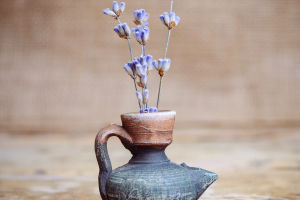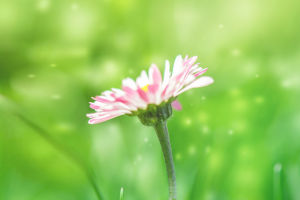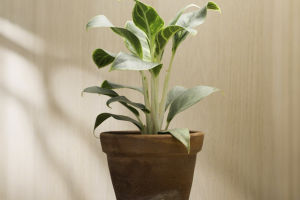Hydroponic gardening is becoming increasingly popular for flower enthusiasts, offering a way to grow beautiful blooms without the need for soil.
This method relies on nutrient-rich water to nourish plants, which can result in healthier, faster-growing flowers.
However, hydroponic flowers require specific care to thrive. Understanding the unique needs of these plants can help ensure success. Here are some essential tips for caring for your hydroponic flowers!
Choosing the Right System for Hydroponic Flowers
Before diving into care techniques, it’s important to select the right hydroponic system. The most common systems for flowers include deep water culture (DWC), nutrient film technique (NFT), and aeroponics. Each system has its benefits depending on the type of flowers you’re growing.
For instance, DWC is great for larger flowers, as it provides consistent access to nutrients and oxygen. Aeroponics, on the other hand, is ideal for smaller flowers, offering excellent oxygen levels and faster growth. Choosing the correct system ensures your flowers get the necessary conditions for healthy development.
Nutrient Solution and pH Levels
One of the key elements of hydroponic care is maintaining the right nutrient solution. Hydroponic flowers require a balanced mix of macro-nutrients like nitrogen, phosphorus, and potassium, along with essential micronutrients. It’s important to follow a schedule for changing the nutrient solution, typically every 2 weeks, to prevent the build-up of salts and minerals.
Equally important is maintaining the right pH level of your nutrient solution. Flowers thrive in a pH range of 5.5 to 6.5. Regularly test the pH using a pH meter or test strips, adjusting as needed to ensure optimal absorption of nutrients. When the pH is too high or too low, flowers may show signs of nutrient deficiencies, affecting their growth.
Water Quality and Temperature
Water quality is essential for the success of hydroponic flowers. Tap water may contain chlorine or other chemicals that can harm the plants, so it's best to use filtered or distilled water. Keeping the water clean is also crucial to prevent algae growth or bacterial infections.
Temperature plays a significant role in the growth of your flowers. Hydroponic systems generally perform best at temperatures between 65°F and 75°F (18°C to 24°C). If the water temperature gets too high, it can reduce oxygen levels, harming the roots. Similarly, if it’s too cold, the plants may experience slow growth. Regularly check the water temperature and adjust as necessary.
Proper Light for Flowering Plants
Light is a vital factor in the growth of hydroponic flowers. Most flowers need 12 to 16 hours of light each day to grow well. If growing indoors, consider using LED grow lights or fluorescent lights that offer the full spectrum of light needed for photosynthesis. LED lights are energy-efficient and can be adjusted to the required distance from your flowers.
When growing hydroponic flowers, make sure the light is evenly distributed across all plants. Uneven lighting can lead to uneven growth, with some flowers growing taller or weaker than others. For the best results, consider rotating your plants occasionally to ensure all sides receive proper light.
Air Circulation and Humidity Control
Air circulation is often overlooked but is essential for the health of hydroponic flowers. Adequate airflow helps prevent stagnant conditions, reduces the risk of mold and mildew, and ensures that your flowers receive enough carbon dioxide for photosynthesis. Use small fans in your growing space to maintain a gentle breeze around the plants.
Humidity levels should also be monitored. Flowers generally prefer humidity levels between 40% and 60%. Too much humidity can encourage fungal infections, while too little can lead to dry leaves and poor growth. Consider using a humidifier or dehumidifier depending on the conditions of your environment.
Pruning and Maintenance
Pruning is crucial to ensure the continued health and shape of your hydroponic flowers. Regularly remove dead or yellowing leaves, which can attract pests or cause rot. By cutting back spent flowers, you encourage the growth of new blooms, maintaining the aesthetic appeal of your flowers.
Additionally, check your hydroponic system frequently for any signs of blockages or algae build-up, especially in the pipes or water reservoir. Keeping the system clean will help your flowers thrive and reduce the risk of disease.
Pest Control
While hydroponic systems reduce some risks of pests, they can still be a problem. Aphids, spider mites, and whiteflies are common pests that can affect hydroponic flowers. One of the safest ways to deal with these pests is through integrated pest management (IPM), which focuses on using natural predators like ladybugs or introducing beneficial insects.
In cases of more severe infestations, organic insecticidal soaps or neem oil can be used as a safer alternative to chemical pesticides. Always ensure that any treatment used is safe for your flowers and their hydroponic environment.
Dear Lykkers! Caring for hydroponic flowers requires attention to detail and an understanding of their specific needs. Maintaining proper water quality, light conditions, nutrient levels, and humidity, you can enjoy beautiful, thriving flowers in your hydroponic setup. Regular monitoring, pruning, and pest management will also ensure that your flowers remain healthy and vibrant.
With the right care, hydroponic flowers can flourish in an environment free from soil, giving you a stunning display of blooms all year long!


